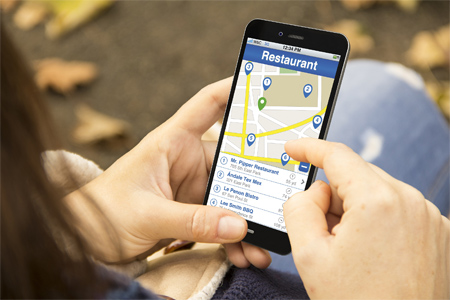The realm of digital marketing is always changing. Businesses that don’t keep up with new trends are often left in the dust. While this applies to many facets of digital marketing, one of the most important for businesses with physical locations is providing potential customers with easy access to location information. If you want customers coming in the door, you need your contact info and address to be prominently featured on your website. As search engines improve their ranking algorithms, and the use of mobile devices becomes more and more standard, local results are frequently presented in the search engine rankings, especially for searches that are clearly looking for an option nearby. Having your location information easily found by the search engines as well as site users is crucial in this day and age.

Ok, you get it. Easily accessible location information is important – seems like a no-brainer. So, what are the best ways to display your location information without sacrificing the integrity of your website layout and still providing users with a seamless experience? There are different ways to go about this depending on your industry and the number of locations you have.
If you have more than one location, it’s even more important to differentiate between them and present customers with the best option that’s closest to them. For starters, you want the big 3 – name, address, and phone number – at the top of your website, above the fold. A recommended practice is to include this right in the header space near the logo or near your main navigation. This will ensure the information shows up on all pages of the site and can be accessed at any point. In addition to the header, as a rule of thumb, it’s always good to replicate this information in the footer of your website. Beyond these two areas, a general contact page with a map and location information is also recommended. You can include a prominent link to this page right in your top navigation.
For businesses with multiple locations, you should build separate pages per location, or at least have clearly defined sections for each location on your contact page. If you’re looking to draw even more attention to this, you can include a content holder or image as a link to your location pages. Sometimes images can draw the eye more than text, so a prominent image with location messaging can prompt a user to click. Just be aware that search engines cannot crawl text that is a part of an image, so a blended approach is recommended. Content holders can be implemented with an image that has crawl-able text overlaid. However you display your location information, you’ll want to make sure the search engines are picking up on correct information for their own results.
Having exposed location information is easily crawled and picked up on by the search engines; you’ll want to be diligent that they’re pulling the correct information into the results. A user might not even click into your website once they find the information they need, so it’s important to check the search engines regularly and submit feedback if you feel incorrect information is being displayed.
By utilizing these approaches, you’ll be well on your way to ensuring potential customers can find your locations easily and get in touch if they need to. With so many searches coming from mobile devices and people looking to take immediate action, this can easily increase your foot traffic and give you the exposure you need.
